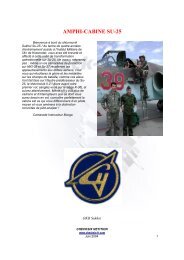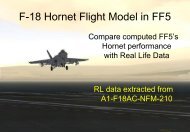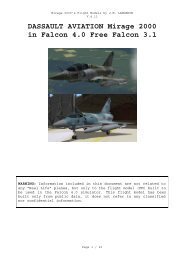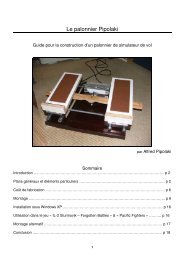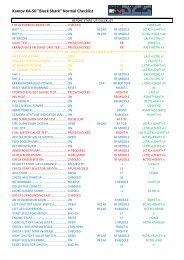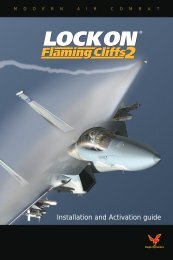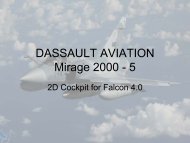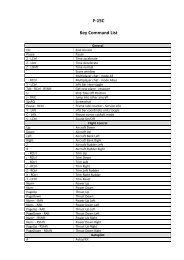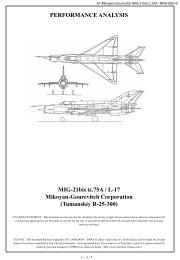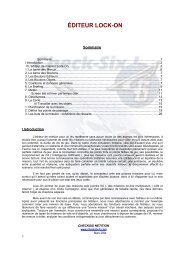You also want an ePaper? Increase the reach of your titles
YUMPU automatically turns print PDFs into web optimized ePapers that Google loves.
<strong>Mig</strong>-<strong>21</strong>-FM-Identification-Rev. 14<br />
- 1 Center line pylon : 24 kg<br />
- 2 Under-wing pylon : 50 kg<br />
- Equipped zero usable fuel : 6,172 kg<br />
- 50% usable internal fuel : 1,060 kg<br />
@0.83 g/cm 3<br />
- Clean Combat Weight : 7,232 kg<br />
- 2 APU-60IM rails for R-60 : 70 kg<br />
- 2 Missile R-60 : 90 kg<br />
- 2 additional wing pylons : 50 kg<br />
- 2 APU-13 rails for R-13M : 60 kg<br />
- 2 Missile R-13M : 184 kg<br />
- Conf. “B” Combat weight :7,686 kg<br />
This defines a gross weight of 16,967 lbs /<br />
7,986 kg and a Drag Index of 12.<br />
Total fuel volume approximated to 1,300l<br />
Load factor limitation set to :<br />
- 7.0 (mach < 0.8)<br />
- 6.0 (mach > 0.8)<br />
Military Thrust Law identification.<br />
The method to be used will be the same as the one described in <strong>Mig</strong>-<strong>21</strong>M section:<br />
- For each altitude (1,000m; 3,000m…)<br />
- Extract from L-17 manual figures the time required to accelerate from initial speed (usually<br />
400 km/h IAS) to 500, 550… km/h (values extracted for drag index of 11, figure assume being<br />
related to a gross weight of 8,000kg / 17,659 lbs<br />
- Translate IAS speed in km/h into mach number<br />
- Interpolate the obtained curve by a poly-line defined by (mach, time) couple where mach<br />
number values are 0.35, 0.45…<br />
- From time needed to go from M0.35 to 0.45, evaluate dV/dt (acceleration) at mach = 0.4<br />
- Then compute required thrust by:<br />
- Continue with M=0.45 and M=0.55 values to compute thrust for M=0.5…<br />
Page - 18



